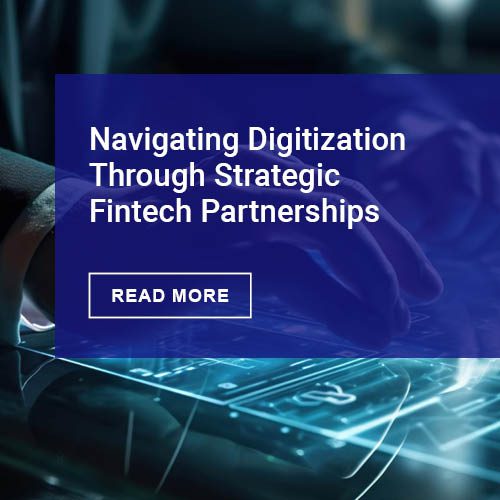Here’s a good question: Can digital currency (DC) thrive within the two-tier monetary system that banks use the world over? After all, the current system has stood the test of time and is used by, well, everyone. Tearing it apart and trying to replace it with, say, a cryptocurrency makes little sense. How can we realize the promises of DC without throwing the baby out with the bathwater?
Earlier this year, Citi published a paper entitled “The Regulated Internet of Value” (the “Citi Paper”). In it, Tony McLaughlin, Head of Emerging Payments and Business Development at Citi’s Treasury and Trade Solutions, makes a case for settling the ongoing tug-of-war between proponents of stablecoins and those who favor central bank digital currency (CBDC) with a third option: the creation of a Regulated Liabilities Networks (RLN). As he explains: “Tomorrow’s money needs to be global, so we may envision a constellation of interoperable Regulated Liability Networks each founded on national currencies and supervised by local regulators.”
McLaughlin is right on this account. If tokenization really is the best way to store and transfer digital value, as the Citi Paper suggests, it’s important that the regulated finance sector take a unified approach to avoid fragmentation and promote functionality. And perhaps, more importantly, to prevent transactions from migrating to the unregulated sector and putting our current system on the back burner.
According to the Citi Paper, pursuing tokenization in lockstep would allow central banks to expand beyond CBDC projects and include tokenization of all regulated liabilities. McLaughlin believes this would effectively “overcome a potential downside, which is the disintermediation of private regulated entities”. He suggests that this broader focus on regulated liabilities “brings the benefits of tokenization without the adverse consequences. It upgrades regulated money, which today only exists in account-based format.”
What McLaughlin doesn’t appreciate, however, is that systems like this are already up and running in the pilot phase with banks around the world.
Several central banks (think: China and the Bahamas) have made great strides toward issuing digital currency on their own. Others have realized the value in embracing alternative ways to deliver the benefits of tokenization without actually issuing digital currency to residents. Afterall, if a central bank can avoid opening Pandora’s Box and still offer the benefits of CBDC, such as 24/7 access to banking services and fast, cheap, and easy cross-border payments, it will truly have located the Holy Grail. Emerging models for digital money make this possible – and are closer to bringing an RLN to life than McLaughlin might suspect.
The Citi paper rightly notes that maintaining a stable economic environment with sound monetary policies requires safe digital money that must be: “(a) regulated, (b) redeemable at par value on demand, (c) denominated in national currency units and, (d) an unambiguous legal claim on the regulated issuer.”[3]
Unlike cryptocurrencies such as Bitcoin, regulated liabilities include central bank money, commercial bank money, and electronic money since they all live on the balance sheet of the relevant regulated financial institution. An RLN would also allow stablecoins to be incorporated into the current financial system as regulated liabilities. By design, the transfer of money in a network of regulated liabilities will be in favor of verified legal persons, reducing the risk of financial crimes, and would be conducted through the transfer of tokens. These transfers are done through entries on a private ledger maintained by the bank, and not using bearer instruments. Consider the following definitions from the Citi Paper:
- A token in a central bank wallet is a liability of the central bank.
- A token in a commercial bank wallet is a liability of the commercial bank.
- A token in an e-money wallet is a liability of the central bank.
“The legal meaning of the token is given by its location of the wallet in which it resides. When a token is at rest in a wallet controlled by an institution, then it is on the balance sheet of that institution as a liability in favour of the token holder.” By contrast, Bitcoin payments are conducted as a digital form of a bearer instrument.
Today, emerging models for digital money have harnessed the power of blockchain technology to express tokenized liabilities on the same shared ledger. This shared ledger represents the best of both worlds, creating digital money that is ‘always on’, instant and programmable, global in scope, but regulated by a sound banking system.
In fact, a shared ledger system enables both central bank money and commercial bank money to be tokenized. Furthermore, it allows transactions to settle instantly since banks on the system are transacting using tokenized central bank balances on shared ledgers. The platform would support multiple regulated liabilities. To address data sovereignty, there would be one ledger for each currency and it would host multiple types of liabilities for that currency. Banks can have positions on multiple ledgers. The ability for a bank to debit a position on one ledger and credit the balance on a different ledger enables cross-border payments.
And the best part? It all fits neatly within the two-tier monetary system.
The Citi Paper is an essential contribution to payments literature, providing the first public articulation of how an RLN can address the very real challenges of integrating digital money into our current financial framework. Yet, while McLaughlin states that creating such a network may seem like a “pipe dream,” at M10 Networks we’re already well on the way to bringing the vision to life for central banks and commercial banks around the world.











